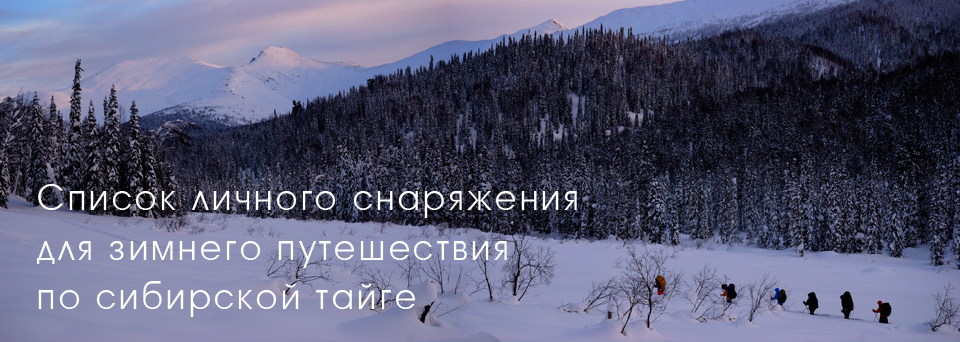 |
|
|
| Ski equipment is provided by the organizer. All the rest, i.e. clothes, a backpack, a sleeping bag, cooking utensils, personal care items and so on shall be prepared by participants themselves. |
|
|
 |
|
|
| You do not need «the particular clothing specialized for the Siberian taiga» for winter travel – all equipment is available in any sport or tourist store. The only main piece of advice is the following: do not choose clothes and footwear for anglers, construction workers or hunters. They are designed to stay warm when a person stays unmoved for a long time. When moving in bulky thick clothing, you will first sweat all over and then cool down and freeze. Choose sport clothing line — for winter sports: |
|
|
|
1. Thermal underwear (a long sleeve t-shirt and leggings). It is important to understand that clothing itself is not a source of heat, it only keeps body warmth, protecting it from the external cold. The aim of thermal underwear is to maintain temperature balance by retracting the excess moisture from the body. The underwear should be made of synthetic fibers (polartec power stretch works extremely well in winter, there are many manufacturers who use it). Thermal underwear should fit tight, but shall not block movement. |
|
 |
|
|
|
|
2. Shoes with the internal heat insulation — necessarily worn for at least a week before the travelling.
In true winter footwear, the outsole and the footbed are designed to isolate the foot from the cold coming from the ground. If the sole of your foot begins to freeze in your «winter» shoe, then you have been deceived. The foot should rest in the boot ergonomically good, so that nothing sticks out and feels pressed, the toes should not touch the front part and stay like in the air bag. It is great if you can move your toes in the boot. Our skis have universal mounts that can hold any kind of boot. The only condition is that it should be tight tough boots with bendable soles. |
|
 |
|
|
| 3. Socks. You may use high thick socks made mostly of synthetic fibers (they do not absorb moisture) with regular walking boots. Thick socks provide moisture withdrawal thus creating a layer of air between the foot and the boot. |
|
|
|
4. Shoe covers or gaiters are a must-have of the equipment. Shoe covers are usually put on the shoes, preventing their gradual soaking because of the snow; they provide 100% protection from moisture. Gaiters can protect only the gap between the shoe and trouser from the snow, which will then certainly melt in your shoes. You can buy shoe covers in a tourist shop or in a hunting & fishing department. There are many types of shoe covers, but the best of them are simple fishing ones — rubber overshoe with a synthetic upper part. It is usually sold with a felt sock.
How to buy the right shoe covers: take one of the winter boots chosen for the trip to the shop with you. There you try the shoe cover on this shoe, but remove the felt sock first. If the shoe sits almost tight — then everything is fine and you can buy these shoe covers.
|
|
 |
|
|
|
|
5. Wind-proof trousers with polyester padding should be put over tights. Just like with other equipment, you should take only one good pair with you — look for universal ones, do not keep several trousers for warmer or colder weather.6. A sweater, and here the best one is a fleece with zip and cuffs on sleeves and on the waist, and with a high collar covering the throat.
7. A light storm jacket — it’s your usual trip clothes, without insulation, wind and waterproof. It should have a hood and be not too short. |
|
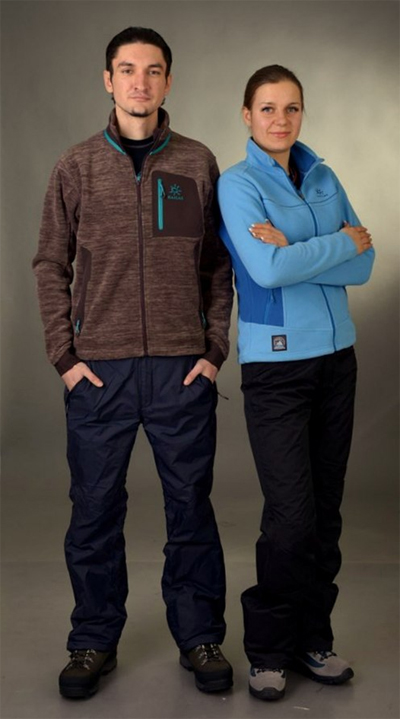 |
|
|
|
|
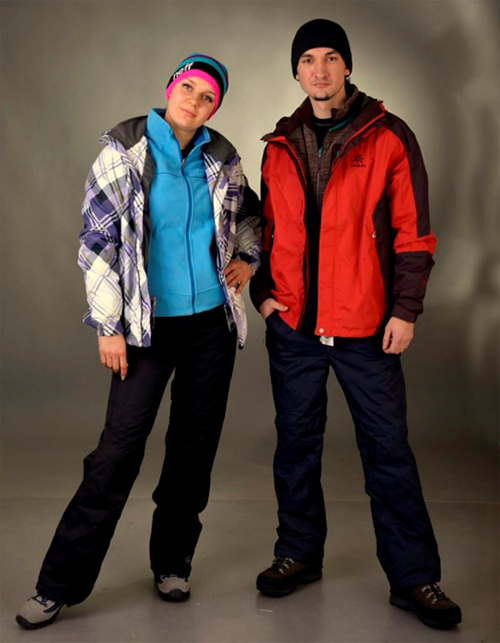 |
|
8. A cap – choose a sport one. Do not take a fur cap with you. In case of cold, you can put on a hood instead.
9. Gloves — take several spare pairs. Gloves will gradually get wet from contact with snow, so it is necessary to have a replacement, warm for cold weather and thin for the opposite.
|
|
|
|
|
|
10. A warm jacket – with polyester padding or a down jacket. This is your mandatory extra jacket in case of severe frost and for lunch halts, when your body is heated after the travel, and when you take off your backpack, you begin to lose heat rapidly.
The jacket should have a hood for full protection and be not knee-length. |
|
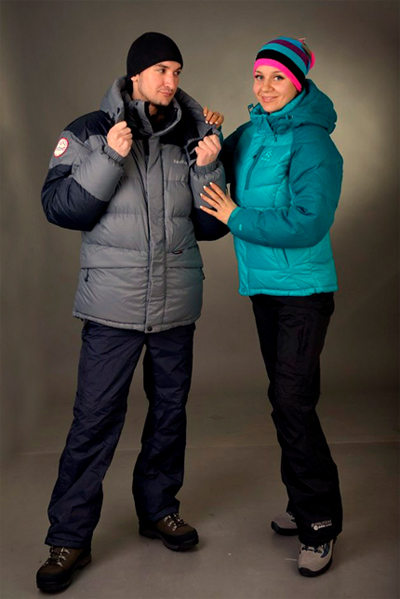 |
|
|
|
|
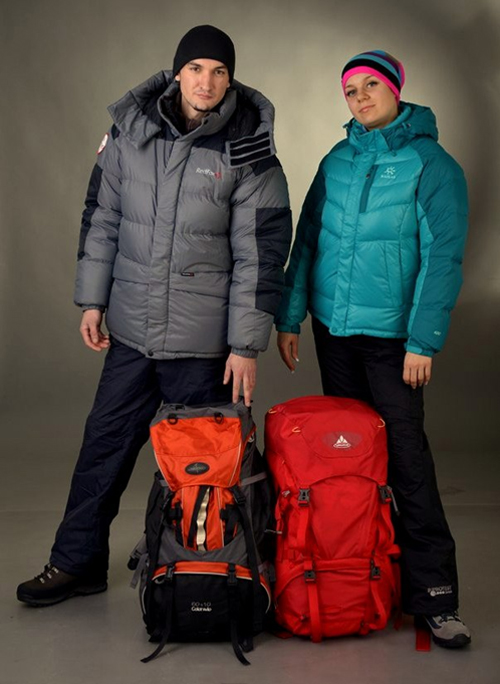 |
|
11. Backpack — at least 60 liters. It should be big enough to store everything you need easily, including a warm jacket, a sleeping bag and a part of the group equipment. |
|
|
|
| 12. Sleeping bag — almost any average one because we will spend nights in warm huts with the furnace, but please do not expect the 30° C. Camping mat (sleeping pad) is not required. |
|
|
|
| 13. Tableware – an unbreakable dish, cup and spoon. |
 |
Plastic or metal, but not porcelain or ceramic. A fork will be not as handy as a spoon. You can take a small folding knife, but do not forget to put in the luggage during the flight.
The plate like shown in the picture here has proved itself very good;
it can be purchased in all Sportmaster stores. |
|
|
|
14. Flashlight headlamp with extra batteries
Do not save on the flashlight, it gets dark early in winter, and there is a possibility that we will ski in twilight sometimes. But even after the arrival to the hut you will need a flashlight all the time to visit the WC, to wander around the hut, etc .. There is a generator is the cabins, but it works only couple of hours in the evening. |
|
|
|
| 15. Personal hygiene items and an individual medical kit |
|
|
 |
|
|
| Everything else, such as: group kitchenware (pots, ladle), food for the whole travel, medical kit, repair kit, communications equipment and ski equipment is provided by the travel organizers. |
|
| . . . . . . . . . . . . . . . . . . . . . . . . . . . . . . . . . . |
 |
| The guide is written by: |
| Vyacheslav Karmanov, Siberian Expeditions |
| the head of travels in the Siberian taiga in 2013, 2014 |
| Expert in winter travels. |
|
|
 |
|
| I have questions about my personal equipment … |
|
 |
|
Ask the travel providers right now.
The answer will come as quickly as possible. |
|
|
|
|
|
 |
|
|
|
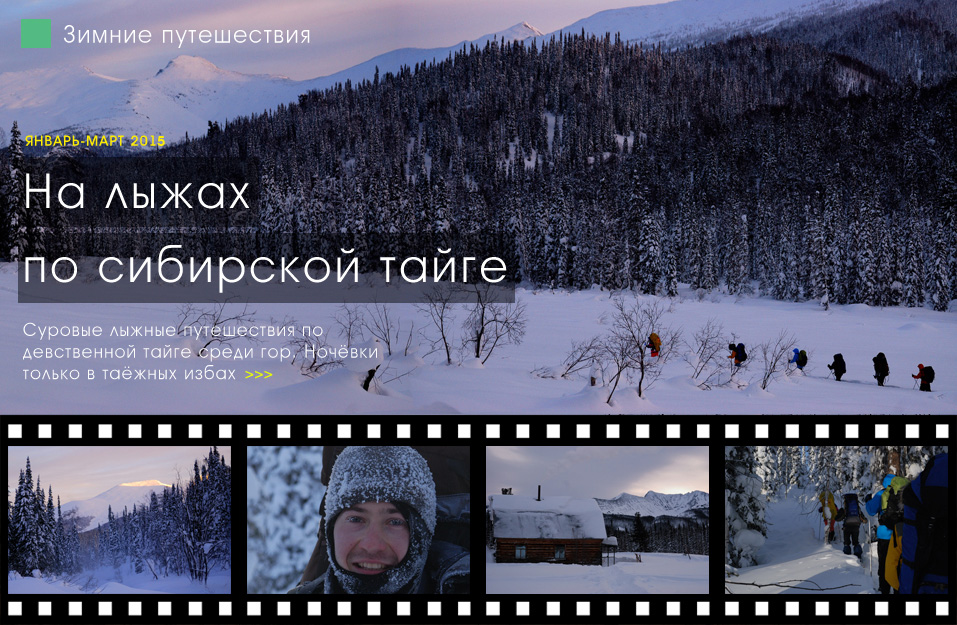 |
|
|













